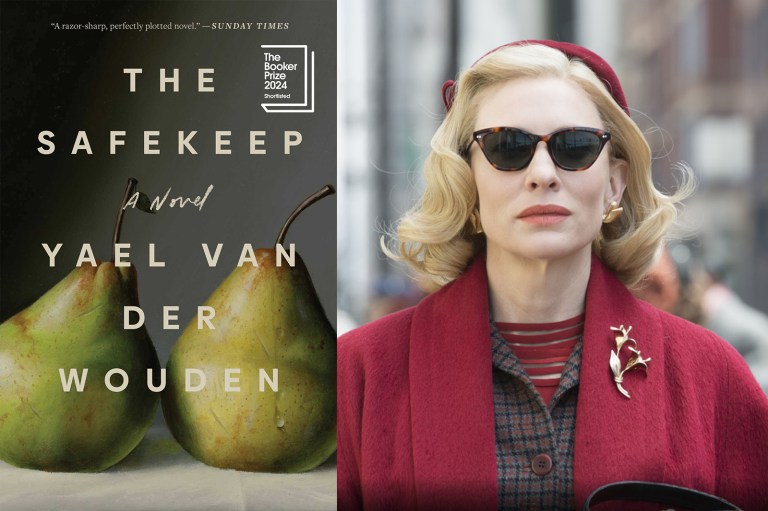
NYT’s May Book Club Selection Could Be The Next ‘Carol’ If A Studio Can Acquire The Film Rights
I found Yael van der Wouden’s novel, The Safekeep, advantageously positioned on display table in my local bookstore, while I was shopping the same way I sometimes do for a new bottle of wine—scanning for an image that captures my attention, and taking a risk without doing any additional research.
Something about the two pears on the dust jacket cover felt explicitly sexual in nature. Maybe it was the drop of water running down one, or a subconscious connection to that infamous peach from Call Me By Your Name, but I had a strong hunch these pairs weren’t entirely straight either. So I picked up the book, and promised to inform the friends I was shopping with whether my knee-jerk assumptions proved to be true.
Let me tell you—they absolutely were.
The Safekeep is practically screaming for a cinematic reinterpretation. It carries the same weight, depth, and sincerity of queer film successes like Disobedience, Portrait of a Lady on Fire, and Carol. It’s historical setting in a 1960’s Netherlands that has yet to fully acknowledge post-war horrors and realities decenters queerness as a standalone hardship, tragedy, or source of otherness, and places it alongside the atrocities of the holocaust. It becomes one of several reasons humans single each other out for rejection or persecution, and makes suffering the umbrella under which we can all claim our normalcy.
It’s “eccentric” protagonist Isabel simply longs to be left alone in the house she grew up in, which is technically in her brother’s name while albeit in her care. The story unfolds at a pace which is both delicate and devourable as Isabel’s quiet and predictable life is interrupted when her flaky brother Louis invites his fiancé Eva to stay with Isabel while he goes away on business. The two women are like oil and water. Isabel harbors a deep seated suspicion and distaste for everything Eva does and stands for, and even starts taking an inventory of all her belongings, convinced Eva is pocketing silverware and other household items while she isn’t looking.
Of course this intense hatred and hyper-vigilance is thinly veiling insane attraction and sexual chemistry, and the two begin a passionate but restrained romance, while reluctantly counting down the days until Louis’ return. In Eva, Isabel discovers a side of herself she never knew existed, one that was clearly missing from her other unsuccessful and undesired relationships. Several scenes document her palpable discomfort with a neighbor who is aggressively seeking her sexual attention. The book is as much about Isabel discovering who she really is, as it is about uncovering Eva’s past, and her unexpected connection to the family home.
It is a poignant, heartbreaking tale about the immense boundaries that can be overcome in love, whether romantic or familial, and the past wrongs we cannot undo, but can try our best to make amends for, when we are honest about the role we play or played in certain events, and our agency to impart change.
I gave the novel five stars on Goodreads, and will definitely be pre-ordering any of van der Wouden’s future works. I’m thrilled to see this title get the feature it deserves by The New York Times Book Club, which has also covered the likes of Percival Everett’s James, Sally Rooney’s Intermezzo, and more. While I derived immense pleasure from stumbling upon an unknown novel that completely blew me out of the water, I know that reaching a wider audience will increase it’s chances of a remake for the big screen. This house and the characters that inhabit it absolutely deserve to be brought to life in sight, sound, and motion.
You can check out the book for yourself, as well as the NYT podcast The Book Review for their upcoming episode.









